#bassari
Text
WEST AFRICAN RESOURCES
The Anthropological Masterlist is HERE.
West African is an African region that spans the western part of the continent.
AGNIS ─ “The Agnis, or Anyi, people are an African people. They are native to the Ivory Coast.”
─ Anyi Information
AKAN ─ “The Akan people are an African people. They are native to Ghana and the Ivory Coast.”
─ Pre-Colonial History of Ghana
─ Modern-Day Akan
─ Akan Dictionary
ANNANG ─ “The Annang, or Anaang, people are an African people. They are native to southern Nigeria.”
─ Annang Dictionary
ASHANTI ─ “The Ashanti, or Asante, people are an African people. They are native to the Ashanti region in Ghana.”
─ Ashanti Information
─ Ashanti Culture
─ Ashanti History
BAMBARA ─ “The Bambara people are an African people. They are native to West Africa.”
─ Bambara Art
─ Bambara Language (in French)
BASSARI ─ “The Bassari people are an African people. They are native to the Kédougou region of Senegal.”
─ Bassari Language (in French)
EWE ─ “The Ewe people are an African people. They are native to the coastal areas of West Africa.”
─ Ewe Information
─ The Anlo-Ewe People
─ The Adze in Ewe Mythology
FON ─ “The Fon, or Dahomey, people are an African people. They are native to south Benin and southwest Togo and Nigeria.”
─ The Dahomey Amazons
IBIBIO ─ “The Ibibio people are an African people. They are native to the coasts of southern Nigeria.”
─ Ibibio Language Resources
─ Ibibio Masks
IGBO ─ "The Igbo, or Ibo, people are an African people. They are native to Nigeria.”
─ Igbo Culture
─ Igbo Dictionary
ISOKO ─ “The Isoko people are an African people. They are native to the Isoko region in Nigeria.”
─ Isoko Information
─ Isoko Culture and History
─ Isoko Dictionary
KONGO ─ “The Kongo people are an African people. They are native to the Atlantic coast of central Africa.”
─ Kongo Language Resources
─ Kongo Dictionary
KONO ─ “The Kono people are an African people. They are native to the Kono District in eastern Sierra Leone.”
─ Kono Culture and Rituals
NIGERIAN ─ “The Nigerian people are an African people that share the Nigerian culture. They are native to Nigeria.”
─ Nigerian Information
─ Colonial Nigeria
SERER ─ “The Serer, or Seereer, people are an African people. They are native to Senegal.”
─ Serer Information
─ Serer Language
TALLENSI ─ “The Tallensi, or Talensi, people are an African people. They are native to northern Ghana.”
─ Tallensi Culture
─ Tallensi Development and Culture
URHOBO ─ “The Urhobo people are an African people. They are native to the Niger Delta in Nigeria.”
─ Ughelli Kingdom Information
─ Urhobo Dictionary
VODUN ─ “Vodun, or Vodon, is a West African religion. It originates in West Africa.”
─ Christians and Vodun
YORUBA ─ “Yoruba, or Isese, is a West African religion. It originates in southwestern Nigeria.”
─ The Yoruba People
─ Yoruba Culture (in Spanish)
─ Yoruba Mythology
#resources#agnis#akan#annang#ashanti#bambara#bassari#ewe#fon#ibibio#igbo#isoko#kongo#kono#nigerian#serer#tallensi#vodun#yoruba#west african
119 notes
·
View notes
Text

Bassari man from Senegal
French vintage postcard
#old#postcard#postkaart#bassari#french#vintage#briefkaart#postal#ansichtskarte#ephemera#photography#senegal#photo#man#postkarte#tarjeta#historic#sepia#carte postale
2 notes
·
View notes
Photo
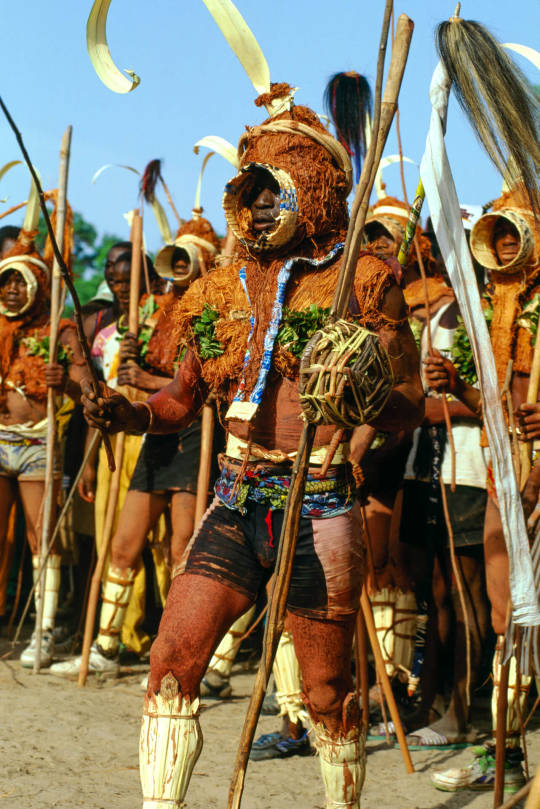
o clímax da iniciação dos homens bassari assume a forma de um duelo entre cada novo iniciado e um mascarado lukuta. este combate é visto como o teste final de virilidade e coragem do iniciado. para a luta, a estrela frontal da máscara lukuta é removida, revelando um capuz protetor e uma viseira. os mascarados também utilizam um protetor de peito acolchoado e carregam uma manopla que serve tanto como escudo quanto como arma. cada iniciado deve lutar ferozmente com seu oponente mascarado. foto de carol beckwith e angela fisher.
11 notes
·
View notes
Text

26 avril : National Save a Horse Day 🐎
Merci à Courtney Godbey pour cette illustration montrant Paisley avec son cheval Galaxy, sans oublier le bassaris Lewis, la mascotte du Ranch Milagro. 🏜
#horselover#appaloosa#bassaris#ringtail cat#romanjeunesse#roman#bookstagram#instalivre#magie#roman papier#amazon#courtney godbey#animals#arizona#desert#paranormal#mystery#cheval#horse#cavalier#souvenirs#equine
34 notes
·
View notes
Text
Le bassaris rusé ou ring-tailed cat, charmant mammifère d'Amérique du nord
Nouvel article publié sur https://www.2tout2rien.fr/le-bassaris-ruse-ou-ring-tailed-cat-charmant-mammifere-damerique-du-nord/
Le bassaris rusé ou ring-tailed cat, charmant mammifère d'Amérique du nord
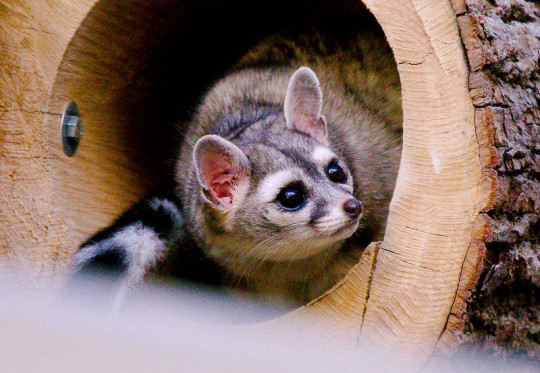
#Arizona#bassaris#Bassariscus astutus#chat#espece#fourrure#mexique#odeur#queue#raton laveur#ringtail#USA#vidéo#animaux#imxok
1 note
·
View note
Text
TV3 GMB2022: Teiya Presentation Disputed
TV3 GMB2022: Teiya Presentation Disputed
Francis Npong
TV3 Ghana’s reality show, Ghana’s Most Beautiful, over the years, took Ghanaians through the histories of Ghanaian tribes. It’s a regional-based educational entertainment show.
Last Sunday’s presentation by the northern region’s representative, One Teiya, sought to tell a story of how a certain Dagomba dance came about and ended up incurring the displeasure of two tribes, the…

View On WordPress
0 notes
Text
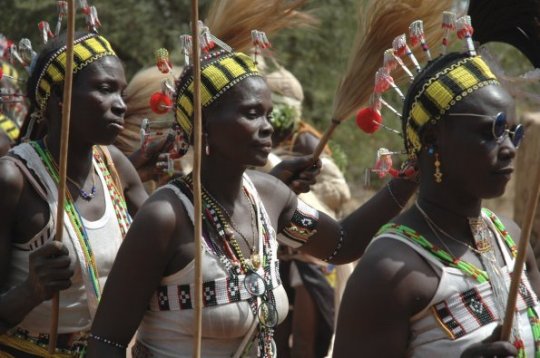
#Bassari Country and Niokolo Koba Park - Senegal - La https://www.cicotour.com ' bassari_country_and_parc_d...#A trek to meet ethnic groups and discover authentic Senegalese cultures: safari in the Niokolo Koba Park#Bassari country#and finally swimming.#A trek to meet ethnic groups and discover authentic Senegalese cultures: safari in the park of Niokolo Koba#and finally bathing ...Bassari country#park#and sumptuous landscapes#Tel 776338621 watsap#Email for any reservation: [email protected]#web: cicotour.com#Translated with www.DeepL.com/Translator (free version)
0 notes
Text
Dionysus Deity Guide
Content warning: Dionysus is linked heavily with sexuality and sexual themes will be prevalent throughout this post.

Who is Dionysus?
Also spelled “Dionysos”, he is the Greek god of wine, ecstasy, and theatre to name a few of his areas of expertise. He was later adopted by the Romans who referred to him as Bacchus. Dionysus was known as being “twice born” due to the story of his birth(s).
The story of Dionysus’ birth is a tragedy, beginning his life with his mother’s death. The story goes that Hera caught wind of Semele’s pregnancy with Zeus’ child and convinced her to ask Zeus to show her his true godly form in order to prove that he really was Zeus. This true form was too much for a mortal to handle and Semele was consumed by fire—or the heat Zeus’ lightning bolts. Not wanting his child to die with her, Zeus sewed Dionysus into his own thigh (thought to mean his testicles).
Parents and Siblings
Zeus (Father)
Semele (Mother)
Demeter (Mother, at times)
Persephone (Mother in Orphic mythos)
Siblings
Aeacus
Angelos
Apollo
Ares
Artemis
Athena
Eileithyia
Enyo
Eris
Ersa
Hebe
Helen of Troy
Hephaestus
Heracles
Hermes
Minos
Pandia
Persephone
Perseus
Rhadamanthus
Tantalus
the Graces
the Horae
the Litae
the Muses
the Moirai
Lovers or Partners
Ariadne (Wife/Consort)
Aphrodite
Aura
Beroe
Cronois
Nicaea
Althaea
Erigone
Pellene
Physcoa
Ampelus
Polymnus or Hyplipnus
Children
HYMENAIOS/Hymenaeus (Son)
IAKKHOS (Iacchus) (Son)
METHE (Daughter)
PASITHEA (Daughter)
PRIAPOS/Priapus (Son)
SABAZIOS/Sabazius (Son)
TELETE (Daughter)
THYSA (Daughter)
DEIANEIRA (Daughter)
EURYMEDON (Son)
KERAMOS/Ceramus (Son)
NARKAIOS/Narcaeus (Son)
OINOPION/Oenopion (Son)
PEPARETHOS/Peparethus (Son)
PHANOS (Son)
PHLIASOS or PHLIAS (Son)
STAPHYLOS/Staphylus (Son)
THOAS
Epithets
Note: Dionysus has many epithets and to create a list of all of them would make this post WAY too long so I’ve added as many as I could while retaining a good length for the post. :,>
Dionysus Eleutherios ("the liberator")
Acratophorus, Ἀκρατοφόρος ("giver of unmixed wine"), at Phigaleia in Arcadia
Acroreites at Sicyon
Androgynos Ἀνδρόγυνος (androgynous, specifically in intercourse) referring to the god taking both an active male and a passive female role.
Bassareus, Βασσαρεύς a Thracian name for Dionysus, which derives from bassaris or "fox-skin", which item was worn by his cultists in their mysteries.
Braetes, Βραίτης ("related to beer") at Thrace
Cistophorus Κιστοφόρος ("basket-bearer, ivy-bearer"), Alludes To baskets being sacred to the god.
Dimetor Διμήτωρ ("twice-born") Refers to Dionysus's two births.
Dendrites Δενδρίτης ("he of the trees"), as a fertility god.
Enorches ("with balls"), with reference to his fertility, or "in the testicles" in reference to Zeus' sewing the baby Dionysus "into his thigh", understood to mean his testicles). Used in Samos and Lesbos.
Iacchus, Ἴακχος a possible epithet of Dionysus, associated with the Eleusinian Mysteries. In Eleusis, he is known as a son of Zeus and Demeter. The name "Iacchus" may come from the Ιακχος (Iakchos), a hymn sung in honor of Dionysus.
Lenaius, Ληναῖος ("god of the wine-press")
Phleus ("related to the bloοm of a plant").
Pseudanor Ψευδάνωρ (literally "false man", referring to his feminine qualities), in Macedonia.
Tauros, Ταῦρος ("a bull"), occurs as a surname of Dionysus.
(Wiki)
Notes
Dionysus may have been worshipped as early as c. 1500–1100 BC by Mycenaean Greeks.
After birth Dionysus was said to have been sent to be cared for by Nymphs at Mount Nysa, the identities of these Nymphs varies by source.
His wife, Ariadne, was abandoned by Theseus on the island of Naxos. In some myths she is slain and/or ascends to immortality to live with her husband on Mt. Olympus.
Once he was an adult, Dionysus traveled to the underworld to bring his mother back with him to Olympus where it’s said that Zeus then turned her into the goddess Thyone—Goddess of the Bacchic frenzy that his female followers experience.
Dionysus is regularly found with groups of satyrs and maenads.
Another name the Greeks had for Dionysus was Bacchus, this was the name the Romans would later adopt for the god. Bacchus means “the noisy or riotous god”, fitting for this buck-wild deity! (Said with affection, of course.)
Along with wine, ecstasy, and theatre, Dionysus was known as a god of vegetation, madness, and frenzy along with quite a few other specializations.
Once a group of pirates kidnapped Dionysus who planned to sell him as a slave (or other unsavory things, depending on the myth); he overran their boat with creeping vines and beasts, and caused the men to go insane, then turned them into dolphins as they jumped overboard.
Dionysus has been depicted in many ways over time but two prevalent depictions are either him as an androgynous youth or an old, bearded man.
Apparently Dionysus hates owls; rather he hates the “sight of an owl” (Theoi)
As Bacchus he was commonly depicted as having ram or bull horns.
Dionysus had many cults throughout the ancient world including not just Greece, but in Scythia, Eastern Europe, Libya, North Africa and Gaul, Southern France as well.
Modern Deity Work
Correspondences
These are not all historically accurate. Anything that has a background in ancient tradition will be marked with a (T).
Rocks/Stone/Crystals
Grape Agate
Amethyst (it was believed that this stone could protect you from drunkenness)
Antimony
Gold
Garnet
Ruby
Herbs/Plants
Pinecone & Pine tree (due to his staff being tipped with a pinecone) (T)
Grapes/grapevines (T)
Ivy (T)
Asphodel (T)
Animals
Leopard or Panther
Tiger
Bull
Serpent
Dolphins (T)
Fawns (his followers were said to wear fawn-skins)
Important Dates
Dionysia
Haloa
Ascolia
Lenaia
Bacchanalia
Offerings
Wine (T)
Objects or imagery of the aforementioned items and animals
Fruit or fruit salad
Honey
Beer
Acts of Devotion
Go buck-wild (half joking here)
Dance
Host festivities
Sing
Attend, write, or act in a play (T)
Sign, create, or recite Hymns to Dionysus (T)
Protect or be an ally for queer, androgynous, and gender non-conforming folks
Dress up in costumes
Make a mask for him (T)
Have sex or solo sex
As the god of comedy he'd also probably enjoy stand-up comedians just sayin
Be yourself!! Dionysus is especially known to love on outcasts.
All in all, how you interact with a deity is up to you, these are simply a few suggestions for you based on my readings!
References and Further Reading
Dionysus - Britannica
Dionysus - Wikipedia
Dionysos - Theoi
The Bacchae - Ancient-Literature
The Masque of Dionysus by Helene P. Foley
The Frogs - Aristophanes (wiki summary, but there are free pdfs of the translated story!)
Misc Myths: Dionysus - Overly Sarcastic Productions
Ecstasy and Possession: The Attraction of the Women to the Cult of Dionysus
Cult of Dionysos - Theoi
349 notes
·
View notes
Text
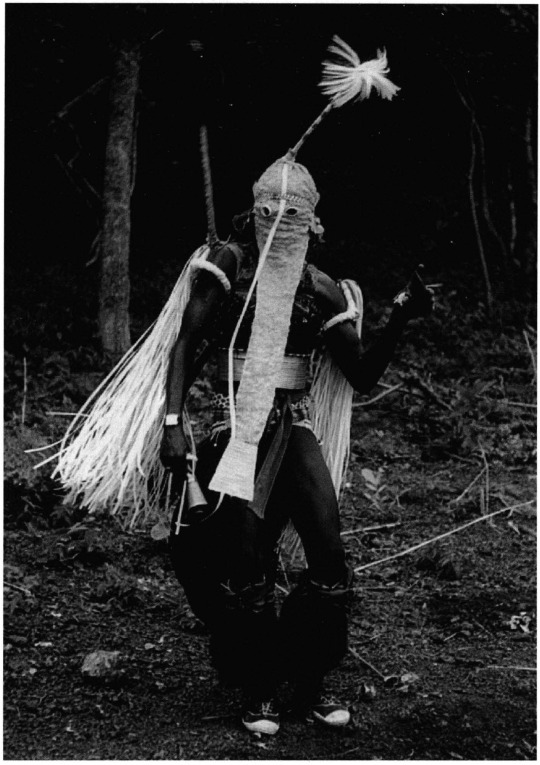
Gwangwuran mask - Etyolo, Senegal. Photo: Robert Gessain, 1969.
La musique bassari : un parcours obligé
17 notes
·
View notes
Text
Dualistic Deity Reveling in Fox Skin Part 4 (End)
The last character, the extra boss:

Misa Iakkhea
Ineffable Reveler of Twofold Nature
Their ability is to cross the boundary of gender.
A mysterious deity from a faraway land, coming to spread the word of their teacher, the god of wine and rebirth. Their teacher has a famed history of traveling eastward, and following in his footsteps, Misa arrived in Gensokyo. Wielding the sacred mirror of the Orphic Mysteries, they managed to convert a large portion of kitsune to their way of living. Now, they are content sit back to watch the festivies be lead by their first and most loyal disciple, Bassaris.
So that's it for this project. Thanks to @just9art for helping me out with some of these names!
8 notes
·
View notes
Photo
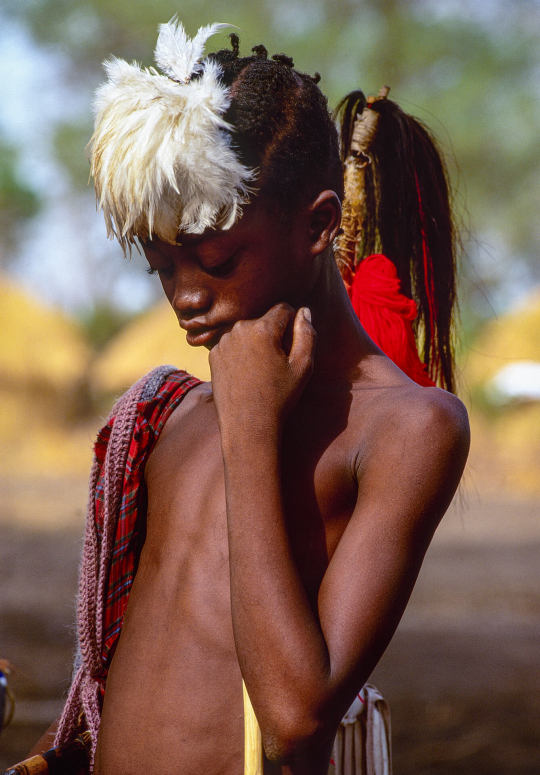
os bassari do senegal têm um sistema abrangente de classificação etária com grandes cerimônias marcando a transição de uma faixa etária para outra. os homens bassari passam por 7 estágios, começando aos 10 anos de idade. a cerimônia mais importante, chamada koré, é a iniciação dos jovens à idade adulta. na foto, um jovem iniciado bassari traz em sua cabeça um adereço de penas de galinha. foto de carol beckwith e angela fisher.
5 notes
·
View notes
Text

Senegal Folk Bassaris Kaolack Fadiouth market c.1981
2 notes
·
View notes
Text
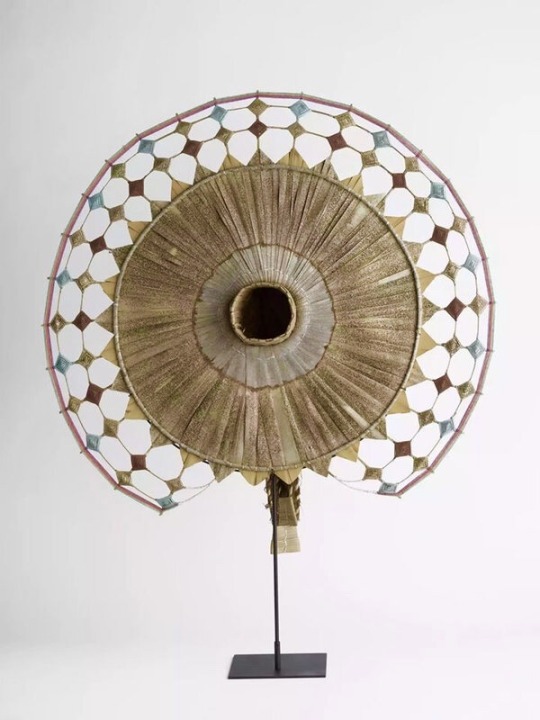

Mask, lukuta, Front, back and detail views, 20th century,
South of Senegal, northern Guinea, Bassari population.
Bark, roo, wool.
Courtesy Alain Truong
18 notes
·
View notes
Photo




Tom Welling, Ken Duken and Saïd Taghmaoui in Professionals - "Deep Fake". More pics here.
In return for a small favor, Vincent helps the Europol agent Neumann to put Tariq Bassari behind bars.
9 notes
·
View notes
Photo

Mask, South of Senegal, Northern Guinea, Bassari population
4 notes
·
View notes
